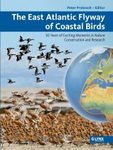Rufen Sie uns an (9:30 - 18:00 DE)
+44 (0) 1803 86 59 13International
+44 (0) 1803 86 59 13Brauchen Sie Hilfe?
HilfeDatenerfassung und Monitoring
Feldführer und Naturgeschichte
Akademische und professionelle Bücher
- Evolutionary Biology
- Evolution
- Human Evolution & Anthropology
- Cladistics, Phylogeny & Taxonomy
- View All
British Wildlife
British Wildlife is the leading natural history magazine in the UK, providing essential reading for both enthusiast and professional naturalists and wildlife conservationists. Published eight times a year, British Wildlife bridges the gap between popular writing and scientific literature through a combination of long-form articles, regular columns and reports, book reviews and letters.
Conservation Land Management
Conservation Land Management (CLM) ist ein Mitgliedermagazin und erscheint viermal im Jahr. Das Magazin gilt allgemein als unverzichtbare Lektüre für alle Personen, die sich aktiv für das Landmanagement in Großbritannien einsetzen. CLM enthält Artikel in Langform, Veranstaltungslisten, Buchempfehlungen, neue Produktinformationen und Berichte über Konferenzen und Vorträge.





![Guia de les Papallones Diürnes de Catalunya [Guide to the Diurnal Butterflies of Catalonia] Guia de les Papallones Diürnes de Catalunya [Guide to the Diurnal Butterflies of Catalonia]](http://mediacdn.nhbs.com/jackets/jackets_resizer_xlarge/24/240593.jpg?height=620)
![Guia de les Papallones Diürnes de Catalunya [Guide to the Diurnal Butterflies of Catalonia]](http://mediacdn.nhbs.com/jackets/jackets_resizer/24/240593.jpg)
![Guia de les Papallones Diürnes de Catalunya [Guide to the Diurnal Butterflies of Catalonia]](http://mediacdn.nhbs.com/jackets/jackets_resizer/24/240593_01.jpg)
![Guia de les Papallones Diürnes de Catalunya [Guide to the Diurnal Butterflies of Catalonia]](http://mediacdn.nhbs.com/jackets/jackets_resizer/24/240593_02.jpg)
![Guia de les Papallones Diürnes de Catalunya [Guide to the Diurnal Butterflies of Catalonia]](http://mediacdn.nhbs.com/jackets/jackets_resizer/24/240593_03.jpg)
![Guia de les Papallones Diürnes de Catalunya [Guide to the Diurnal Butterflies of Catalonia]](http://mediacdn.nhbs.com/jackets/jackets_resizer/24/240593_04.jpg)
![Guia de les Papallones Diürnes de Catalunya [Guide to the Diurnal Butterflies of Catalonia]](http://mediacdn.nhbs.com/jackets/jackets_resizer/24/240593_05.jpg)
![Guia de les Papallones Diürnes de Catalunya [Guide to the Diurnal Butterflies of Catalonia]](http://mediacdn.nhbs.com/jackets/jackets_resizer/24/240593_06.jpg)
![Guia de les Papallones Diürnes de Catalunya [Guide to the Diurnal Butterflies of Catalonia]](http://mediacdn.nhbs.com/jackets/jackets_resizer/24/240593_07.jpg)
![Guia de les Papallones Diürnes de Catalunya [Guide to the Diurnal Butterflies of Catalonia]](http://mediacdn.nhbs.com/jackets/jackets_resizer/24/240593_08.jpg)
![Guia de les Papallones Diürnes de Catalunya [Guide to the Diurnal Butterflies of Catalonia]](http://mediacdn.nhbs.com/jackets/jackets_resizer/24/240593_09.jpg)
![Guia de les Papallones Diürnes de Catalunya [Guide to the Diurnal Butterflies of Catalonia]](http://mediacdn.nhbs.com/jackets/jackets_resizer/24/240593_10.jpg)
![Guia de les Papallones Diürnes de Catalunya [Guide to the Diurnal Butterflies of Catalonia]](http://mediacdn.nhbs.com/jackets/jackets_resizer/24/240593_11.jpg)
![Guia de les Papallones Diürnes de Catalunya [Guide to the Diurnal Butterflies of Catalonia]](http://mediacdn.nhbs.com/jackets/jackets_resizer/24/240593_12.jpg)
![Guia de les Papallones Diürnes de Catalunya [Guide to the Diurnal Butterflies of Catalonia]](http://mediacdn.nhbs.com/jackets/jackets_resizer/24/240593_13.jpg)




![El Lince Ibérico: Una Batalla por la Supervivencia [The Iberian lynx: A Battle for Survival]](http://mediacdn.nhbs.com/jackets/jackets_resizer_medium/16/164148.jpg?height=150&width=106)
![Ocells de Catalunya, País Valencià i Balears: Inclou també Catalunya Nord, Franja de Ponent i Andorra [Birds of Catalonia, Valencia and the Balearic Islands: Including North Catalonia, the Western Strip and Andorra]](http://mediacdn.nhbs.com/jackets/jackets_resizer_medium/24/241085.jpg?height=150&width=90)
![Primates: Biología, Comportamiento y Evolución [Primates: Biology, Behaviour and Evolution]](http://mediacdn.nhbs.com/jackets/jackets_resizer_medium/24/246690.jpg?height=150&width=103)
![Plantas Silvestres de Madrid: Clave de Identificación Mediante Fotografías [Wild Plants of Madrid: Photographic Identification Key]](http://mediacdn.nhbs.com/jackets/jackets_resizer_medium/24/246691.jpg?height=150&width=90)
![Aves de España [Birds of Spain]](http://mediacdn.nhbs.com/jackets/jackets_resizer_medium/22/229281.jpg?height=150&width=90)
![Aves de Chile [Birds of Chile]](http://mediacdn.nhbs.com/jackets/jackets_resizer_medium/15/158893.jpg?height=150&width=106)

![Dónde ver Aves en Doñana [Where to Watch Birds in Doñana]](http://mediacdn.nhbs.com/jackets/jackets_resizer_medium/15/158903.jpg?height=150&width=93)
![Mamíferos de España: Península, Baleares y Canarias [Mammals of Spain: The Iberian Peninsula, Balearics and Canary Islands]](http://mediacdn.nhbs.com/jackets/jackets_resizer_medium/22/227675.jpg?height=150&width=90)
![Amfibis i Rèptils de Catalunya, País Valencià i Balears [Amphibians and Reptiles of Catalonia, Valencia and the Balearic Islands]](http://mediacdn.nhbs.com/jackets/jackets_resizer_medium/18/182276.jpg?height=150&width=85)
![Guia de les Papallones Diürnes de Catalunya [Guide to the Diurnal Butterflies of Catalonia]](http://mediacdn.nhbs.com/jackets/jackets_resizer_medium/24/240593.jpg?height=150&width=93)
![Aves Amenazadas de España [Endanged Birds of Spain]](http://mediacdn.nhbs.com/jackets/jackets_resizer_medium/16/167874.jpg?height=150&width=106)























